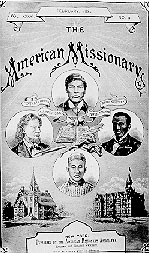 W
WThe American Missionary Association (AMA) was a Protestant-based abolitionist group founded on September 3, 1846, in Albany, New York. The main purpose of the organization was abolition of slavery, education of African Americans, promotion of racial equality, and spreading Christian values. Its members and leaders were of both races; The Association was chiefly sponsored by the Congregationalist churches in New England. Starting in 1861, it opened camps in the South for former slaves. It played a major role during the Reconstruction Era in promoting education for blacks in the South by establishing numerous schools and colleges, as well as paying for teachers.
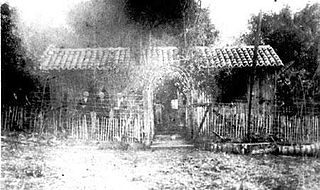 W
WThe Confederados were some 10,000 to 20,000 Confederates who moved to Brazil, chiefly to the state of São Paulo, from the Southern United States after the American Civil War. Although many eventually returned to the United States after Reconstruction, some remained and descendants of Confederados can be found in many cities throughout Brazil. The city of Americana in Brazil was founded by these emigrants.
 W
WConfederate colonies were made up of refugees from the Confederate States of America who fled the United States after the latter won the American Civil War (1861–1865). They settled in many countries, especially Brazil, and to a lesser extent Mexico.
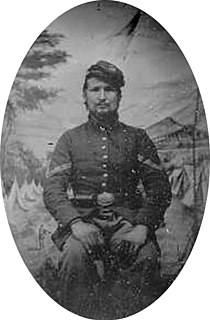 W
WConrad Noll (1836-1925) was a German-born soldier who fought for the Union in the U.S. Civil War. He received the Medal of Honor for his actions during the Battle of Spotsylvania as a member of the 20th Michigan Infantry. He was born in Germany on February 20, 1836 and died in Ann Arbor, Michigan on May 26, 1925. He is buried in the Forest Hill Cemetery of Ann Arbor.
 W
WForeign enlistment in the American Civil War largely favored the Union, which was far more successful in attracting international volunteers. Nonetheless, thousands of immigrants and mercenaries served with the Confederacy.
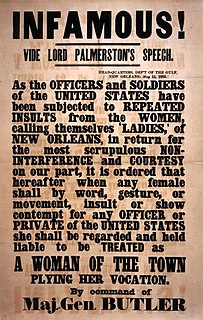 W
WGeneral Order No. 28 was a military decree made by Maj. Gen. Benjamin Butler during the American Civil War. Following the Battle of New Orleans, Butler established himself as military commander of that city on May 1, 1862. Many of the city's inhabitants were strongly hostile to the Federal government, and many women in particular expressed this contempt by insulting Union troops.
 W
WHispanics in the American Civil War fought on both the Union and Confederate sides of the conflict. Not all the Hispanics who fought in the American Civil War were "Hispanic-Americans", in other words citizens of the United States. Many of them were Spanish subjects or nationals from countries in the Caribbean, Central and South America. Some were born in a US Territory and therefore did not have the right to US Citizenship. It is estimated that approximately 3,500 Hispanics, mostly Mexican-Americans, Puerto Ricans and Cubans living in the United States joined the war: 2,500 for the Confederacy and 1,000 for the Union. This number increased to 10,000 by the end of the war.
 W
WJewish Americans have served in the United States armed forces dating back to before the colonial era, when Jews had served in militias of the Thirteen Colonies. Jewish military personnel have served in all branches of the armed forces and in every major armed conflict to which the United States has been involved. According to the U.S. Department of Defense, as of 2006 there were currently 3,973 known Jewish servicemen and servicewomen on active duty.
 W
WDuring the American Civil War, music played a prominent role on both sides of the conflict: Union and Confederate. On the American Civil War battlefield, different instruments including bugles, drums, and fifes were played to issue marching orders or sometimes simply to boost the morale of one's fellow soldiers. Singing was also employed not only as a recreational activity but as a release from the inevitable tensions that come with fighting in a war. In camp, music was a diversion away from the bloodshed, helping the soldiers deal with homesickness and boredom. Soldiers of both sides often engaged in recreation with musical instruments, and when the opposing armies were near each other, sometimes the bands from both sides of the conflict played against each other on the night before a battle.
 W
WNew Texas was a colony established in São Paulo, Brazil by remnants of the Confederacy after their surrender in the American Civil War. The New Texas colony's leader was Frank McMullen. The colonists were shipwrecked on the coast of Cuba during their first attempt to get to Brazil, and only successfully made their way there on their second attempt. McMullen died of tuberculosis about two years after the establishment of the colony, with his death the colony collapsed.
 W
WThe New Virginia Colony was a colonization plan in central Mexico, to resettle ex-Confederates after the American Civil War. The largest settlement was Carlota, approximately midway between Mexico City and Veracruz, although other settlements were planned near Tampico, Monterrey, Cuernavaca, and Chihuahua.
 W
WThe Port Royal Experiment was a program begun during the American Civil War in which former slaves successfully worked on the land abandoned by planters. In 1861 the Union captured the Sea Islands off the coast of South Carolina and their main harbor, Port Royal. The white residents fled, leaving behind 10,000 black slaves. Several private Northern charity organizations stepped in to help the former slaves become self-sufficient. The result was a model of what Reconstruction could have been. The African Americans demonstrated their ability to work the land efficiently and live independently of white control. They assigned themselves daily tasks for cotton growing and spent their extra time cultivating their own crops, fishing and hunting. By selling their surplus crops, the locals acquired small amounts of property.
 W
WSalt was a crucial resource during the American Civil War. Salt not only preserved food in the days before refrigeration, but was also vital in the curing of leather. Union general William Tecumseh Sherman once said that "salt is eminently contraband", as an army that has salt can adequately feed its men.
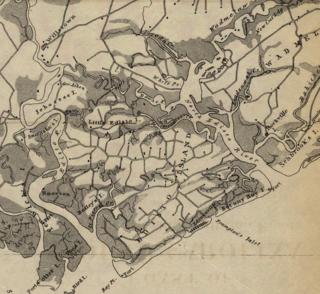 W
WEdisto Island during the American Civil War was the location of a number of minor engagements and for a time of a large colony of African-American escaped former slaves during the American Civil War (1861–1865). Edisto Island was largely abandoned by planters in November 1861 and in December 1861, escaped slaves began setting up their own refugee camps there. In January 1862, armed African Americans from the island and Confederate forces clashed and a Confederate raid in reprisal killed a small number of unarmed African Americans. In February, Union forces were stationed on the island to develop it as a staging area for future campaigns against Charleston, twenty-five miles away, as well as to protect the colony, which would eventually number thousands of African Americans. As Union forces took control of the island, a number of skirmishes occurred, but Confederates withdrew. In June, most of the Union troops left the island in a campaign, which culminated in the Battle of Secessionville. In July, the remaining troops withdrew, and the colony was removed to St. Helena Island. For the rest of the war, a small number of escaped slaves and plantation owners remained and farmed the island, but it was largely abandoned. Near the end of the war, the island was again used as a location of colonies of freed slaves.
 W
WSlavery as a positive good was the prevailing view of White Southern U.S. politicians and intellectuals just before the American Civil War, as opposed to a crime against humanity. They defended the legal enslavement of people for their labor as a benevolent, paternalistic institution with social and economic benefits, an important bulwark of civilization, and a divine institution similar or superior to the free labor in the North. Proponents of enslavement as "a good — a great good" often attacked the system of industrial capitalism, contending that the free laborer in the North, called by them a "wage slave", was as much enslaved by capitalist owners as were the African people enslaved by Whites in the South.
 W
WSlavery in the United States was the legal institution of human chattel enslavement, primarily of Africans and African Americans, that existed in the United States of America from its founding in 1776 until passage of the Thirteenth Amendment in 1865. Slavery was established throughout European colonization in the Americas. From early colonial days, it was practiced in Britain's colonies, including the Thirteen Colonies which formed the United States. Under the law, an enslaved person was treated as property and could be bought, sold, or given away. Slavery lasted in about half of U.S. states until 1865. As an economic system, slavery was largely replaced by sharecropping and convict leasing.
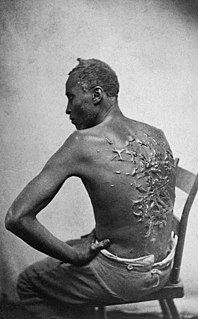 W
WThe treatment of enslaved people in the United States varied by time and place, but was generally brutal, especially on plantations. Whipping and rape were routine, but usually not in front of white outsiders, or even the plantation owner's family. An enslaved person could not be a witness against a white; enslaved people were sometimes required to whip other enslaved people, even family members. There were also businesses to which a slave owner could turn over the whipping. Families were often split up by the sale of one or more members, usually never to see or hear of each other again. There were some relatively enlightened slave owners—Nat Turner said his master was kind—but not on large plantations. Only a small minority of enslaved people received anything resembling decent treatment; one contemporary estimate was 10%, not without noting that the ones well treated desired freedom just as much as those poorly treated. Good treatment could vanish upon death of an owner. As put by William T. Allan, a slaveowner's abolitionist son who could not safely return to Alabama, "cruelty was the rule, and kindness the exception".
 W
WDuring the American Civil War (1861–1865), the Union, also known as the North, refers to the United States of America, specifically to the federal government of President Abraham Lincoln and the 20 free states and 5 border states that supported it. The Union was dedicated to the defeat and termination of the Confederate States of America, informally called "the Confederacy" or "the South".